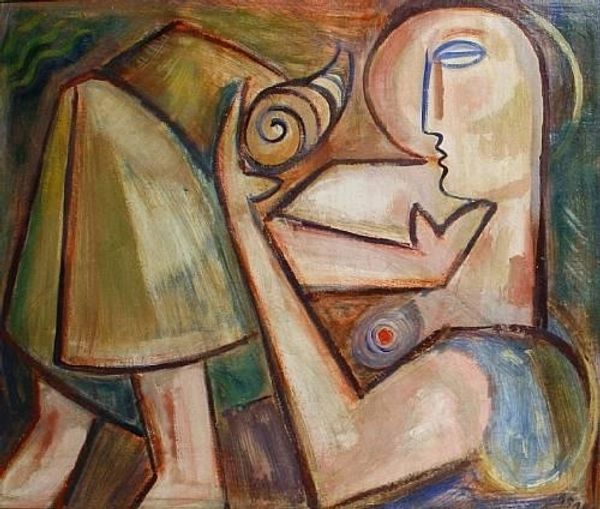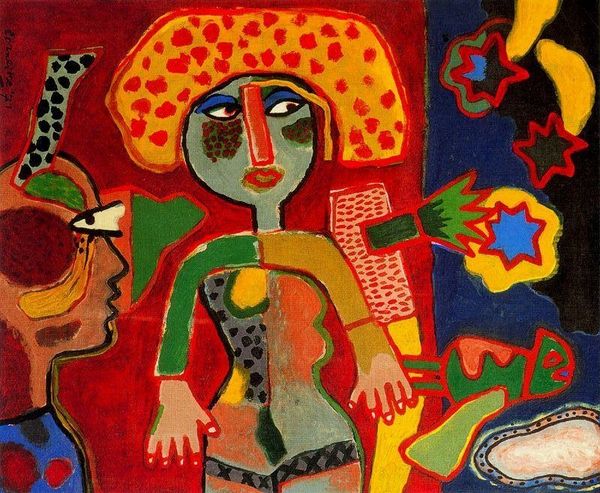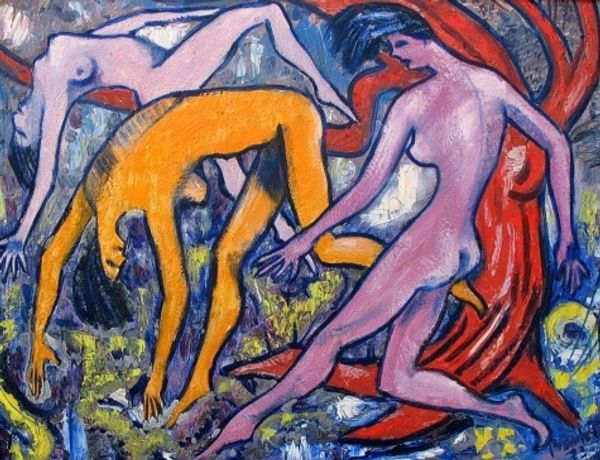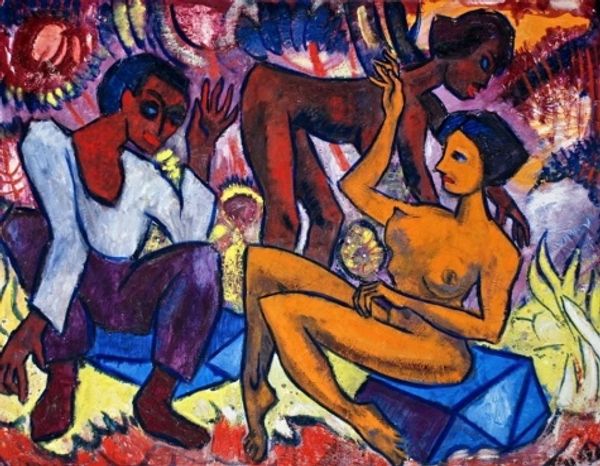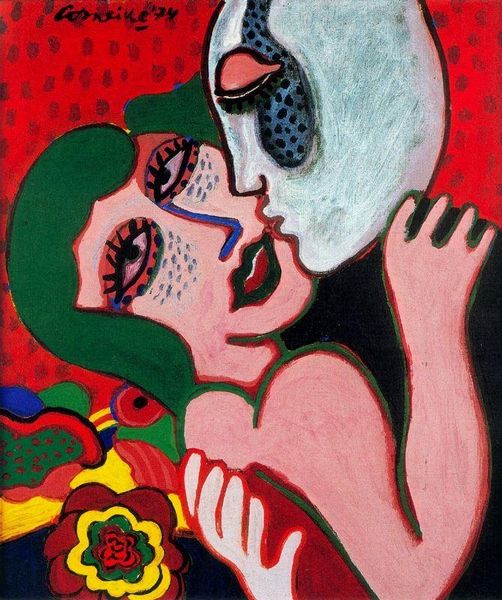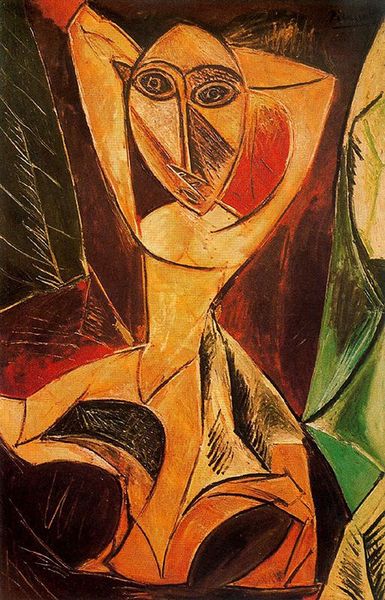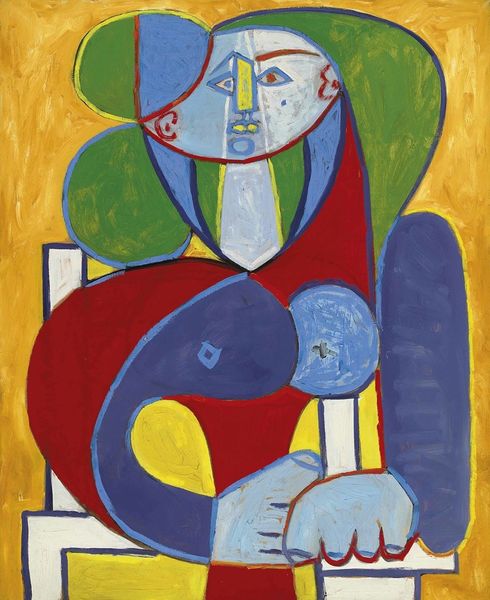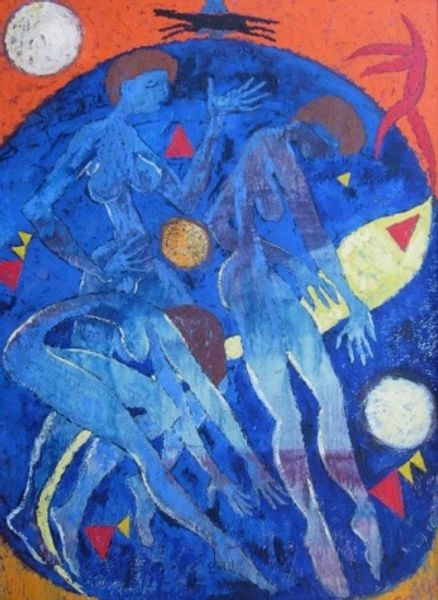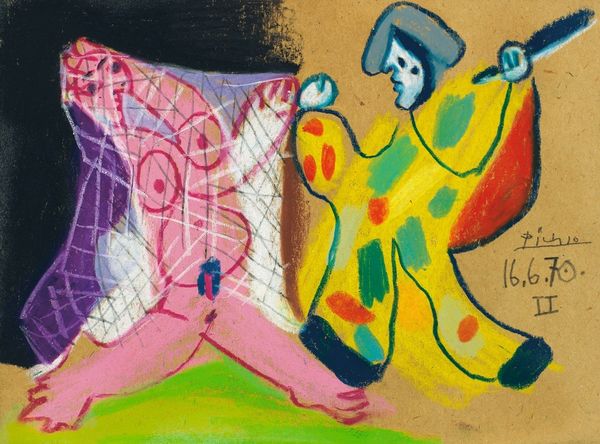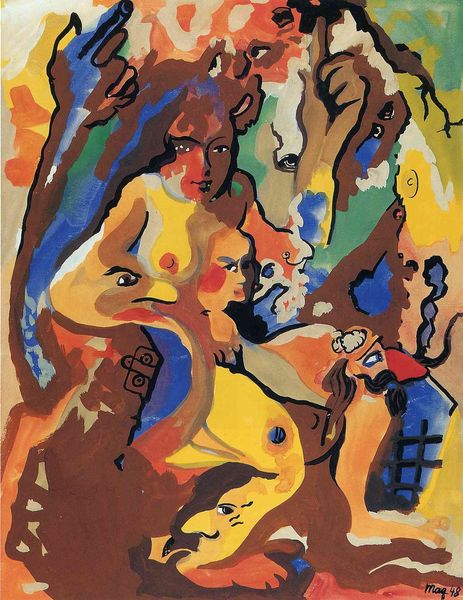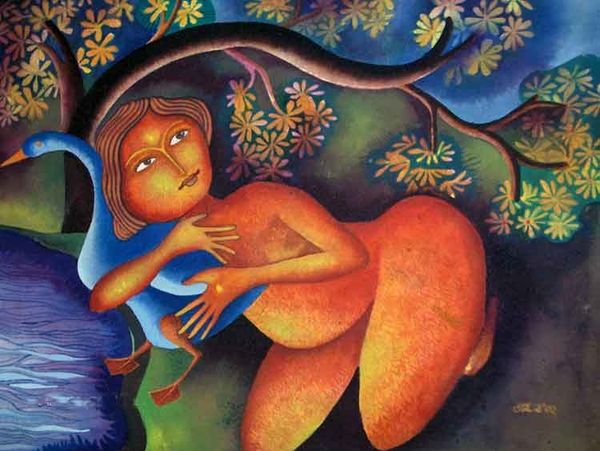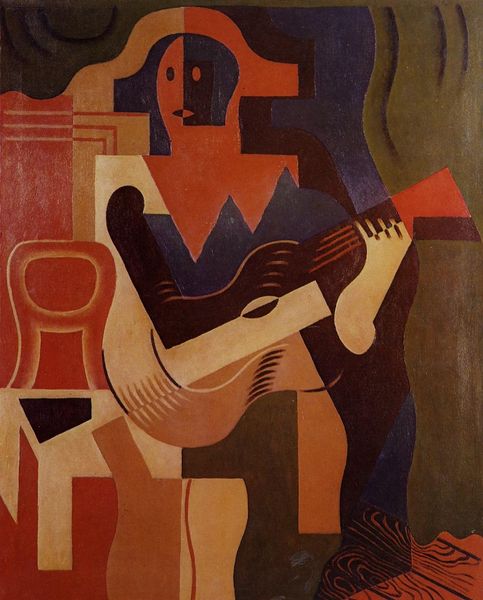
Copyright: Endre Bartos,Fair Use
Editor: So, here we have Endre Bartos's "Snake Woman," painted in 2005 using acrylic with impasto. It has a strange dream-like quality to it, with the geometric shapes contrasting so strongly with the figure. How do you interpret this work? Curator: The title “Snake Woman” immediately draws my attention. The snake, present or implied, carries millennia of loaded symbolic weight—temptation, knowledge, healing. Is this a reclaiming of the feminine? Consider her pose: fragmented, distorted. The face itself is split, a dual presentation. What psychological state does this suggest to you? Editor: A sort of fractured identity, maybe? The bright colors and childlike shapes feel playful, but the composition as a whole seems uneasy. Curator: Exactly! And the impasto, that thick application of paint, enhances the emotional weight. Notice how the geometric forms press in around the figure. What sort of visual dynamic does this evoke? Editor: Almost like she's trapped, or at least confined by societal structures? Curator: Potentially. Remember, abstract expressionism often grapples with inner turmoil and societal pressures. It's as though Bartos is using this figure and symbolic snake, these broken shapes, as an act of almost rebellion. Editor: That makes so much sense. I was focusing on the shapes, but now I see how everything – the colour, texture, and fragmentation – reinforces this feeling of tension and defiance. I hadn’t fully considered all the layered meaning behind such a seemingly simple presentation. Curator: Visual symbols echo, change, and reappear across history, carrying a multitude of interpretations specific to their contexts. Bartos makes us aware of this through color and form, reminding us of the enduring complexities within the human experience.
Comments
No comments
Be the first to comment and join the conversation on the ultimate creative platform.

